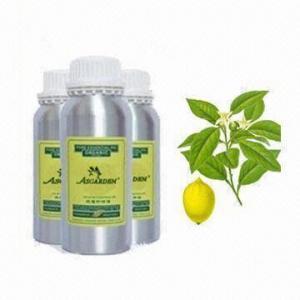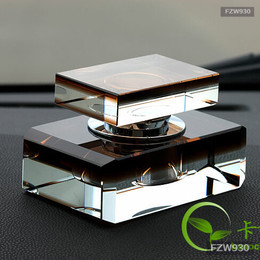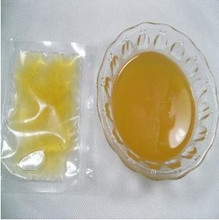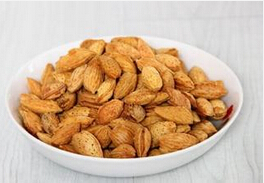essentialoil_essential oil -油的介绍
Essential oil
From Wikipedia, the free encyclopedia
Jump to: navigation, search
Plant oils
essentialoil_essential oil -Types
Vegetable fats (list)
Essential oil (list)
Macerated (list)
Uses
Drying oil - Oil paint
Cooking oil
Fuel - Biodiesel
Aromatherapy
Components
Saturated fat
Monounsaturated fat
polyunsaturatedfat
Transfat
An essential oil is any concentrated, hydrophobic liquid containing volatile aroma compounds from plants. They are also known as volatile or ethereal oils, or simply as the "oil of" the plant material from which they were extracted, such as oil ofclove. The term essential indicates that the oil carries distinctive scent (essence) of the plant, not that it is an especially important or fundamental substance. Essential oils do not as a group need to have any specific chemical properties in common, beyond conveying characteristic fragrances. They are not to be confused with essential fatty acids.
Essential oils are generally extracted by distillation. Other processes include expression, or solvent extraction. They are used in perfumes and cosmetics, forflavoringfood and drink, and for scenting incense and household cleaning products.
Variousessential oils have been used medicinally at different periods in history. Medical applications proposed by those who sell medicinal oils vary from skin treatments to remedies for cancer, and are often based on historical use of these oils for these purposes. Such claims are now subject to regulation in most countries, and have grown correspondingly more vague, to stay within these regulations.
Interest in essential oils has revived in recent decades, with the popularity of aromatherapy, a branch of alternative medicine which claims that the specific aromas carried by essential oils have curative effects. Oils are volatilized or diluted in a carrier oil and used in massage, or burned as incense, for example.
Contents [hide]
1 Production
1.1 Distillation
1.2 Expression
1.3 Solvent extraction
1.4 Production quantities
2 Essential oil use in aromatherapy
3 Dilution
4 Raw Materials
4.1 Rose oil
5 Dangers
6 Media
7 Notes and references
7.1 Additional references
8 See also
[edit] Production
Main article: Extraction (fragrance)
[edit] Distillation
See also: distillation
Today, most common essential oils, such as lavender, peppermint, and eucalyptus, are distilled. Raw plant material, consisting of the flowers, leaves, wood, bark, roots, seeds, or peel, is put into analembic(distillation apparatus) over water. As the water is heated the steam passes through the plant material, vaporizing the volatile compounds. The vapors flow through a coil where they condense back to liquid, which is then collected in the receiving vessel.
Most oils are distilled in a single process. One exception is Ylang-ylang (Cananga odorata), which takes 22 hours to complete through a fractional distillation.
The water recondensed from the distillation process is referred to as a hydrosol, hydrolat, herbal distillate or plant water essence, which may be sold as another fragrant product. Popular hydrosols are rose water, lavender water, lemon balm, clary sage and orange blossom water. The use of herbal distillates in cosmetics is increasing. Some plant hydrosols have unpleasant smells and are therefore not sold.
[edit] Expression
Most citrus peel oils are usually expressed mechanically, or cold-pressed. Due to the large quantities of oil in citrus peel and the relatively low cost to grow and harvest the raw materials, citrus-fruit oils are cheaper than most other essential oils. Lemon or sweet orange oils that are obtained as by-products of the commercial citrus industry are even cheaper.
Prior to the discovery of distillation, essential oils (EO) were extracted by pressing.
[edit] Solvent extraction
Most flowers contain very little volatile oil to undergo expression and their chemical components are too delicate and easily denatured by the high heat used in steam distillation. Instead, a solvent such as hexane or supercritical carbon dioxide is used to extract the oils. Extracts from hexane and other hydrophobic solvent are called concretes, which is mixture of essential oil, waxes, resins, and other lipophilic (oil soluble) plant material.
Although highly fragrant, concretes contain large quantities of non-fragrant waxes and resins. As such another solvent, often ethyl alcohol, which only dissolves the fragrant low-molecular weight compounds, is used to extract the fragrant oil from the concrete. The alcohol is removed by a second distillation, leaving behind the absolute.
Supercritical carbon dioxide is used as a solvent in supercritical fluid extraction. This method has many benefits, including avoiding petrochemical residues in the product. It does not yield an absolute directly. The supercritical carbon dioxide will extract both the waxes and the essential oils that make up the concrete. Subsequent processing with liquid carbon dioxide, achieved in the same extractor by merely lowering the extraction temperature, will separate the waxes from the essential oils. This lower temperature process prevents the decomposition and denaturing of compounds and provides for a superior product. When the extraction is complete, the pressure is reduced to ambient and the carbon dioxide reverts back to a gas, leaving no residue. Although supercritical carbon dioxide is also used for making decaffeinated coffee, the actual process is different.
[edit] Production quantities
Estimates of total production of essential oils are difficult to obtain. One estimate, compiled from data in 1989, 1990 and 1994 from various sources gives the following total production, in tonnes, of essential oils for which more than 1,000 tonnes were produced.[1]
Oil Tonnes
Sweet orange 12,000
mentha arvensis4,800
Peppermint 3,200
Cedarwood 2,600
Lemon 2,300
Eucalyptus globulus 2,070
Litsea cubeba 2,000
Clove (leaf) 2,000
spearmint1,300
[edit] Essential oil use in aromatherapy
Main article: Aromatherapy
Aromatherapy is a form of alternative medicine, in which healing effects are ascribed to the aromatic compounds in essential oils and other plant extracts. Many common essential oils have medicinal properties that have been applied in folk medicine since ancient times and are still widely used today. For example, many essential oils haveantisepticproperties, though some are stronger than others.[2]. In addition, many are claimed to have an uplifting effect on the mind, though different essential oils have different properties. The claims are supported in some studies[3][4] and unconfirmed in others.[5]
[edit] Dilution
Essential oils are usually lipophilic (literally: "oil-loving") compounds that usually are not miscible with water. Instead, they can be diluted in solvents like pure 100% ethanol (alcohol), polyethylene glycol, or oils.
[edit] Raw Materials
Main article: List of essential oils
Essential oils are derived from various parts of plants. Some, like orange oil, are derived from any of several parts of the plant.
Berries
Allspice
Juniper
Seeds
Almond
anise
Celery
cumin
nutmegoil
Bark
Cassia
Cinnamon
Sassafras
Wood
Camphor
Cedar
Rosewood
Sandalwood
Rhizome
Ginger
Leaves
Basil
Bay leaf
Cinnamon
Common sage
Eucalyptus
Lemon grass
Melaleuca
Oregano
Patchouli
Peppermint
Pine
Rosemary
Spearmint
Tea tree
Thyme
wintergreen
Resin
Frankincense
myrrh
Flowers
Chamomile
Clary sage
Clove
Geranium
hyssop
Jasmine
Lavender
Manuka
marjoram
Orange
Rose
Ylang-ylang
Peel
Bergamot
Grapefruit
Lemon
Lime
Orange
Tangerine
Root
Valerian
[edit] Rose oil
Main article: Rose oil
The most well-known essential oil is probably rose oil, produced from the petals of Rosa damascena and Rosa centifolia. Steam-distilled rose oil is known as "rose otto" while the solvent extracted product is known as "rose absolute".
[edit] Dangers
Because of their concentrated nature, EO's generally should not be applied directly to the skin in theirundilutedor "neat" form. Some can cause severe irritation or provoke an allergic reaction. Instead, essential oils should be blended with a vegetable carrier oil (also referred to as a base or "fixed" oil) before being applied. Common carrier oils include olive, almond,hazelnutand grapeseed. Common ratio of essential oil disbursed in a carrier oil is 0.5

 爱华网
爱华网



